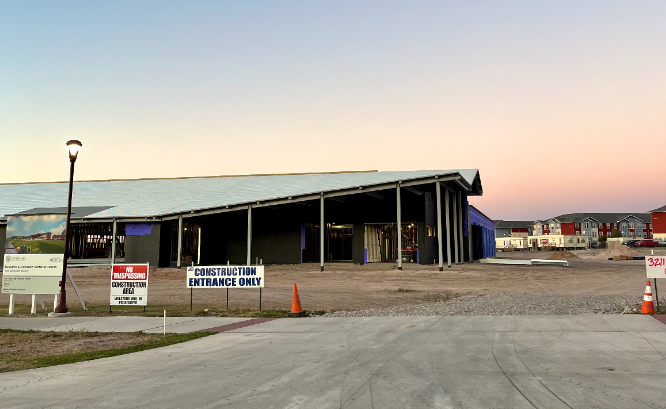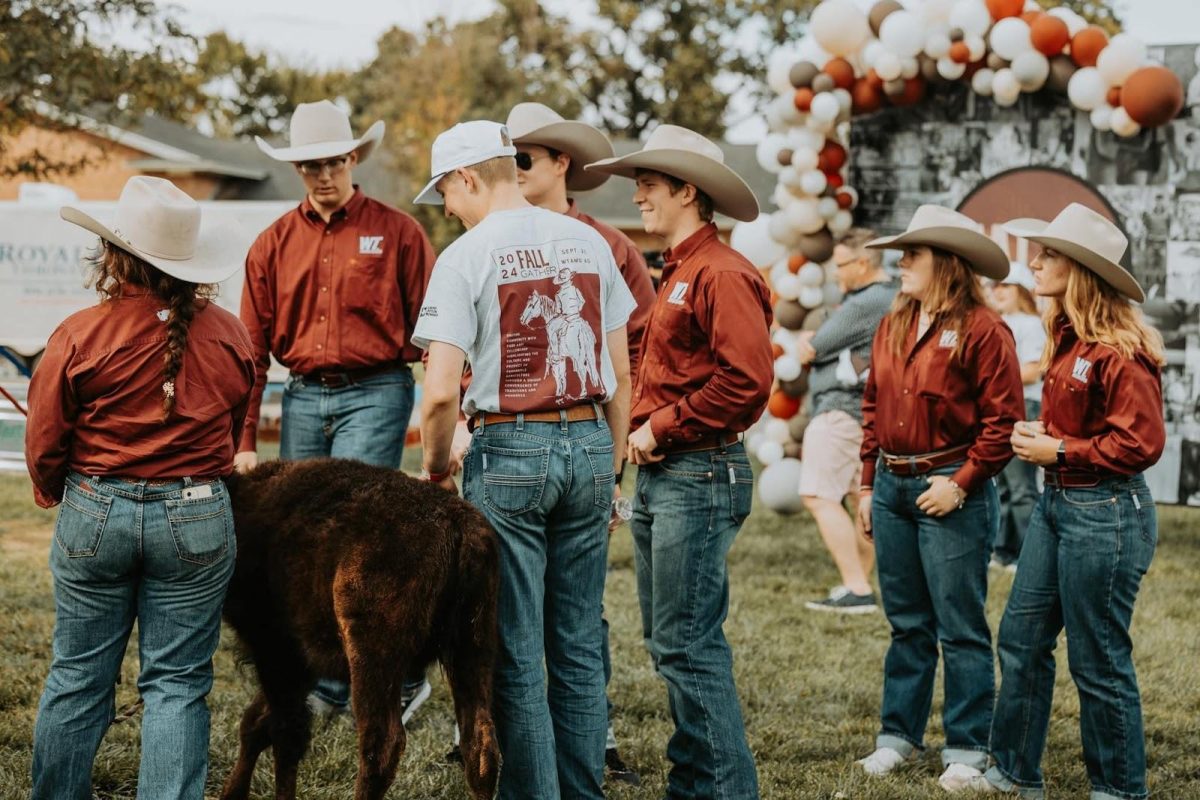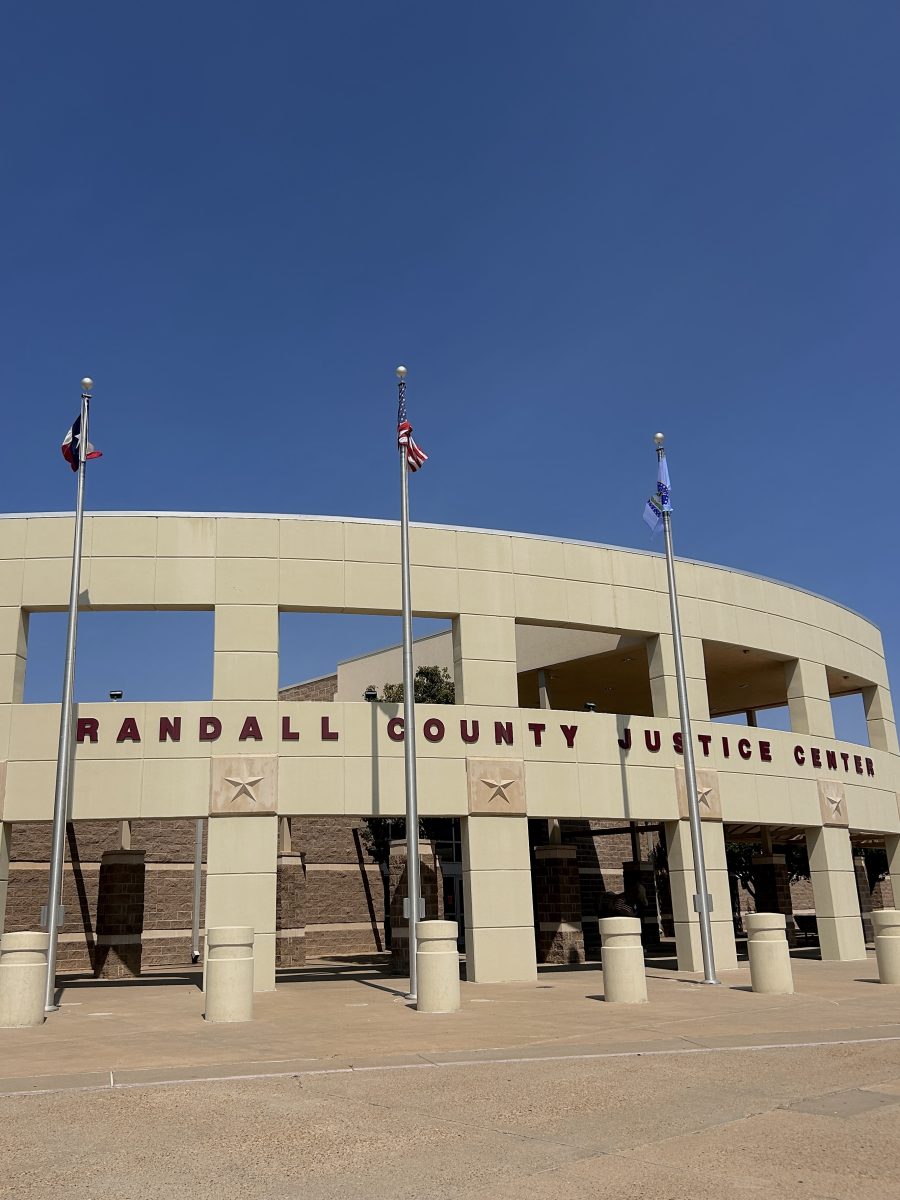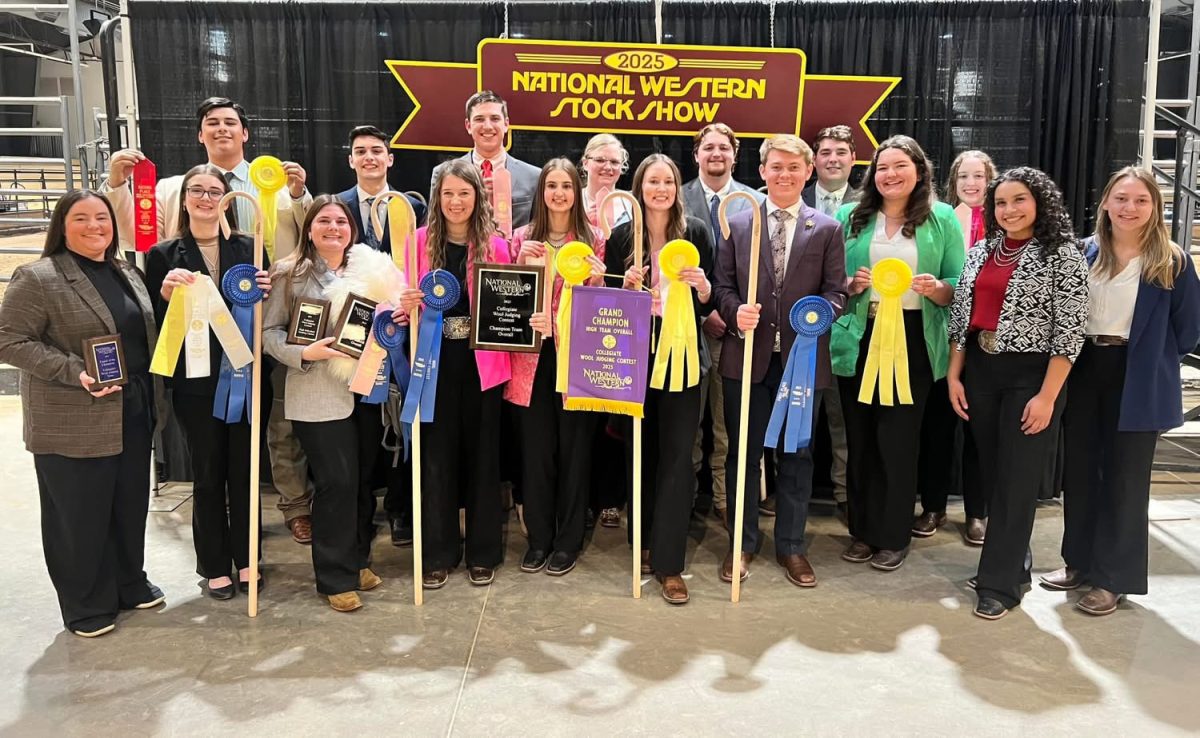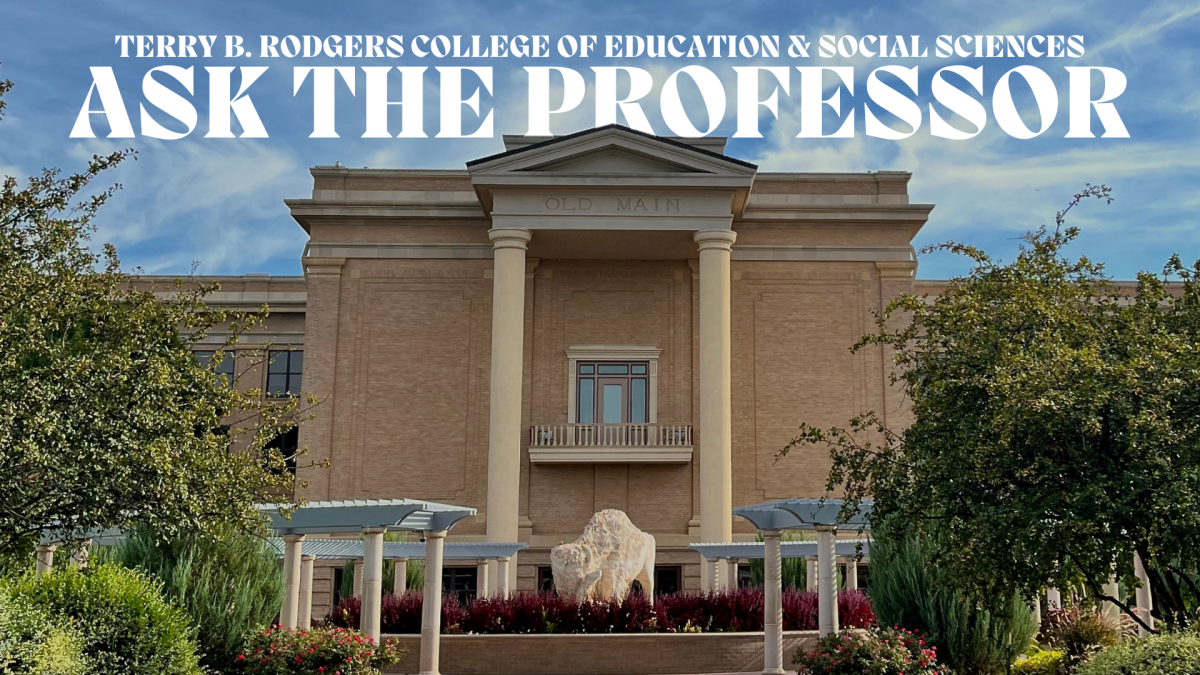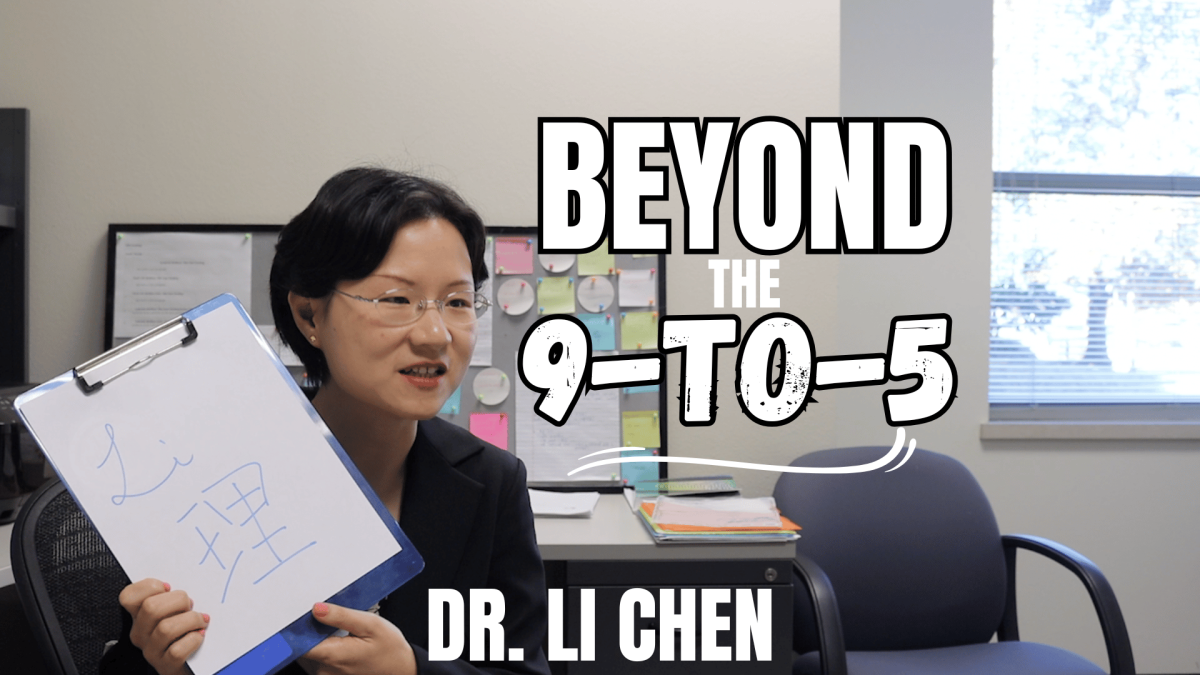
The setting is the Jack B. Kelley Student Center’s Legacy Hall of West Texas A&M University. Legacy Hall is decked out in maroon and white, packed with 750 eager patrons. It is the near future – the hypothetical year 2021.
It’s a warm spring day with a slight breeze, just a few weeks away from the annual Maroon and White intrasquad spring football game.
Four finely dressed individuals are seated next to each other at a table, with a small podium dividing them in the middle. These men are athletic director for West Texas A&M, the head football coach of the program, the sports information director and the president of the university.
Despite their stoicism, they are anxious as they confront the teeming crowd full of students, possible recruits, athletes and members of the press. Cameras and phones take numerous pictures and roll film as these individuals mentally prepare for what they are about to address to the patrons awaiting this declaration.
What they are about to announce will change the landscape of the university for many years to come.
The announcement details a new venue for the storied West Texas A&M University football program, a perennial playoff contender in NCAA’s Division II. However, there is an uneasiness among alumni and donors. Their vision entails the renovation of the former home of Buffalo football: the historic Buffalo Bowl, Kimbrough Memorial Stadium.
Shift back to the present day.
“[Kimbrough] is a very unique setting,” WTAMU athletic director Michael McBroom said. “When one gets in there and sits down to watch a football game, there are very few stadiums that are like it. On a Saturday night on a beautiful Texas Panhandle evening, it is spectacular and once you sit in there, it is really nice. It is a great home environment for us.”
Built in 1959, the West Texas A&M Buffaloes have since called the venue, split between Interstate 27 and Highway 87, home. Their first opponent at Kimbrough was the Arizona Wildcats of the former Border Conference, who are aligned with the prestigious Pacific-12 Conference today.
Kimbrough has also been home of the Randall High and Canyon High soccer and football programs since 1991. Previously, Randall had played in a venue north of their present high school while Canyon played their contests at the junior high, located in the middle of town.
“[Kimbrough] is an old stadium,” Canyon ISD athletic director Brent McCallie said. “But for the sake of Canyon and Randall playing [at Kimbrough], we could not ask for a better facility for two high school teams to play. Kimbrough always draws a lot of playoff games as well. People want to come. As far as what it is done for us, I think it is a great facility for two high school teams to play and of course I think it is a great facility for a college team too.”
“Over the years I’ve been here, I have heard that WT does not play in a better facility than Kimbrough in terms of environment that they play in. I know that there are some nice stadiums around, but there’s a lot of history out here at [Kimbrough]. That is important, and I would hate to see that done away with. But some day in time, it may. It will be a decision based upon what is best for West Texas A&M or an economic decision, or whatever the case that may be. As of right now, we think it’s a good setup.”
When West Texas A&M dropped its football program for a few years in the late 80s and early 90s, the university had struck a deal with Canyon Independent School District, giving Canyon and Randall a 99-year lease, all for one dollar per year for that length of time.
Despite its unique features and the history that is embedded into every steel beam of this historic venue, Kimbrough is not without faults. Currently, it is lacking in ADA standards and prompts volunteers into driving golf carts to aid the disabled up and down the steep slopes of the man-made structure. Both athletic directors see this as a hurdle for Kimbrough when it comes to upgrades required.
“From an administrative standpoint, it’s very difficult to run a game in [Kimbrough],” McBroom said. “We have a great relationship with Canyon ISD and we both have done a very good job in terms of working with what we have without a lot of resources to do upgrades. The infrastructure is 50 years old, and I like to tell people ‘they say it seats 20,000 people, but the restrooms, concession stands and parking were not built for 20,000 people.’ We have some electrical issues, we have ADA issues – accessibility – which prohibit us from doing a lot of renovations right now. We would like to make [Kimbrough] more accessible, but it is a very expensive proposition at this point.”
“The disadvantage is that we don’t have the modern amenities that our competitors do. It’s very difficult to run a game. The flip side of that is, I like to think that I’m pretty pragmatic, from our standpoint…we’re looking at something that we’re using five times a year. That’s basically it, we don’t practice [at Kimbrough] much anymore. But with Canyon and Randall, it’s every weekend throughout the fall and they also run soccer out there too. So there is more use from their standpoint. But for us to put a ton of money into it, makes one think about if we’re going to do that, what would an on-campus stadium look like?”
McCallie addresses those issues facing Kimbrough Stadium as well.
“There is a continuing upkeep on [Kimbrough] because of the age of it,” McCallie said, “Whether it is the water lines or the sewage lines, because the trees out there and their roots getting in the sewer systems. It’s a constant. There is a need for some attention to be given to the stadium. The accessibility, getting in and out of the stadium is difficult. We provide and so does West Texas A&M with the golf cart services.”
Another hurdle for either project is the funding either venture. Each athletic director has different ideas on what each undertaking would cost both institutions.
“We would be in favor of renovating Kimbrough if there was a cost effective solution to renovating,” McBroom said. “To get us what we need as a modern day college football program. We don’t need a lot, but we need the ability for a television truck to come in, plug in and broadcast a game. We need restrooms and concessions. We need to have accessibility for all of our fans.”
“Canyon [ISD] has those same desires and needs. The deal is, can we get Kimbrough to where we need it cost effectively? If it’s dollar for dollar or even close to what a new stadium costs, we will be build a new stadium on campus, because that’s better for us in our future. If it’s the same cost or less. With the numbers we’ve seen, we would lean toward building a new stadium on campus. So if we can renovate cost effectively, it may not be ideal, but we will do that because it’s 20 percent of the cost.”
McCallie presented the flip side of the Kimbrough question. CISD has looked at the proposed changes that could cost anywhere between $10 to $15 million.
“We have sat down and looked at some plans that there some neat ideas out there about [Kimbrough] that don’t cost $60 million,” McCallie said. “We can do some work, and I think make it the place [to go for football]. Let’s make it nice, let’s make work for the both of us. We could be on to something really big.”
McBroom’s vision for the new on-campus stadium, known since his early days as athletic director, would seat anywhere from 12,000 to 14,000 spectators. The new stadium would invoke the same features as Kimbrough to maintain the historical link between the historic Buffalo Bowl and the university, such as the sloped hill for standing room occasions. Housed in this new venue would be modern, yet easily upgradable concession stands, amenities such as LED ribbon boards and restrooms.
The stadium would ideally have three levels: a higher level, ground level and a field level. McBroom said the closer the fans are to the field, the more intimidating the venue will be for future opponents, hence the absence of a track in the stadium plans.
And in developing the Buffalo Sports Park, McBroom alluded to a potential football stadium as part of the University’s master plan.
Other ideas that would be implemented into the new venue, according to McBroom, would be the ability to attract big names for concerts and other events besides hosting football games. There would also be the invitation from the WT Athletics Department for Canyon and Randall to host a few football games at the proposed venue.
“Whatever they decide to do, there won’t be any hard feelings,” McCallie said. “That’s the kind of relationship we have [with WT]. We have occasionally hosted a game or two at the Buffalo Sports Park. This speaks for both sides understanding how this works and it’s been good.”
Current student, student-athlete and alumni sentiment is also apparent toward the movement, going either way in renovating Kimbrough or building a new sports ground from scratch.
“I think renovated Kimbrough would be awesome, and [the stadium being] away from campus would probably be easier because of parking during the week,” Pampa News sports editor John Lee said. “Plus, it would be interesting to see how much tuition would go up if WT built a brand new stadium on-campus versus just a renovation.”
Lee had previously covered football games as a part of The Prairie’s sports department when attending WTAMU.
“I like the on-campus idea for students who may not have transportation,” Matt Watkins, a general assignment reporter for The Hereford Brand, said. “If the shuttle carried [students and fans] to the games, that would be fine. But I like the idea of an on-campus stadium better.”
Watkins is a WTAMU alumnus who also covered football for The Prairie in his time at West Texas A&M.
“I feel that Kimbrough being renovated would be the better option,” Tanner Sims, a sports writer for The Prairie and an advertising/public relations major at WTAMU, said. “I don’t feel like the stadium is in bad enough shape that WT really needs a new stadium. I think with what they have now, they can make it better instead of completely starting from scratch.”
McBroom is willing to wait on the project for a little while longer. As of right now, the current aim of the WT athletic department would be completing the Bain Athletic Center.
The Bain Athletic Center will serve as the headquarters for Buffalo Athletics, from housing locker rooms and strength and conditioning areas for Buff and Lady Buff student-athletes, to welcoming fans with a Championship Atrium as well as to entice incoming recruits. The Bain Athletic Center will be located at the center of the Buffalo Sports Park.
Fast forward to the hypothetical future.
It is now the hypothetical year 2022. Just south of the president’s home and east of the Buffalo Sports Park on a desolate piece of land, a relatively large crowd awaits the beginning of a new era.
It’s a warm spring day with a slight breeze, just a few weeks away from the annual Maroon and White intrasquad spring football game.
A maroon tipped shovel adorning the WT athletic emblem pierced the red soil, held by the president of West Texas A&M University. He then moves to shake hands with the athletic director and hands him the shovel, as the crowd gives a resounding applause.
The athletic director and superintendent of Canyon Independent School District are also present. More handshakes are exchanged between them and the West Texas A&M officials, and smiles are all abound. Bridges have been crossed and agreements have been arranged.
Kimbrough will still stand. It just so happens to be in line for a small renovation and a new paint job, split with purple and white for the Canyon Eagles from the fifty yard line on southward in the stadium, while silver and black streams northward for the Randall Raiders.
“Whatever [WTAMU] decides, we’ll cross that bridge together,” McCallie said.
High school playoff games will still be played at the colossal venue, serving alongside West Texas A&M’s new stadium. Thus making Canyon a destination of sorts for playoff football in the Texas Panhandle, leaving CISD and West Texas A&M in a win-win position for many years to come.




